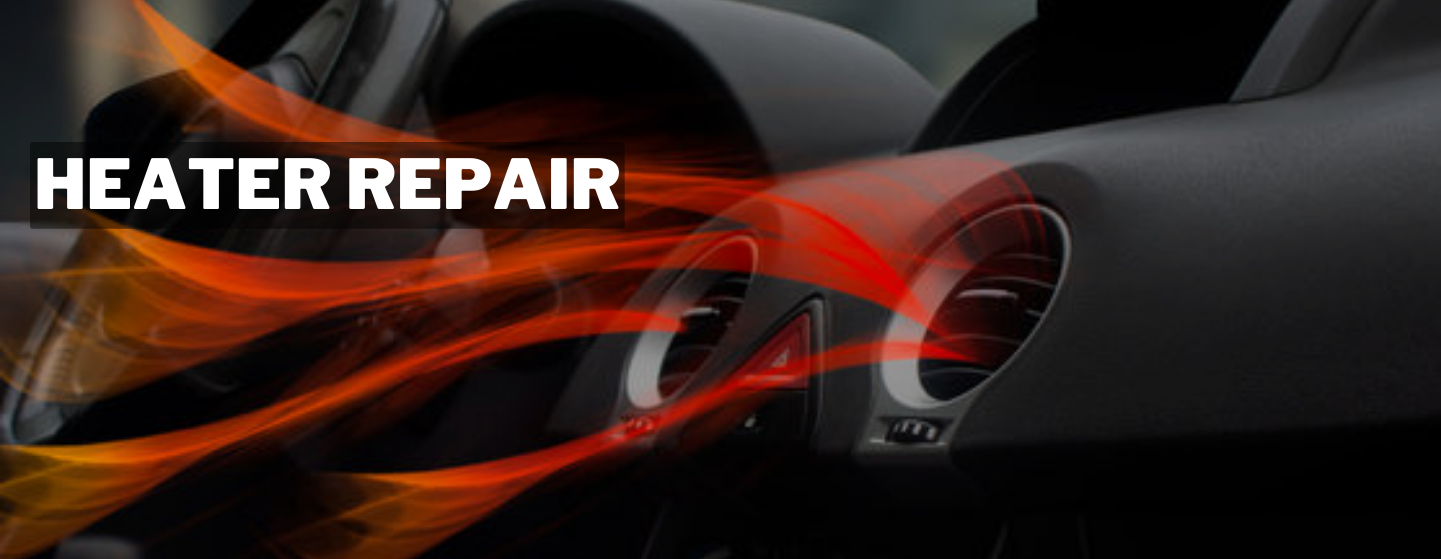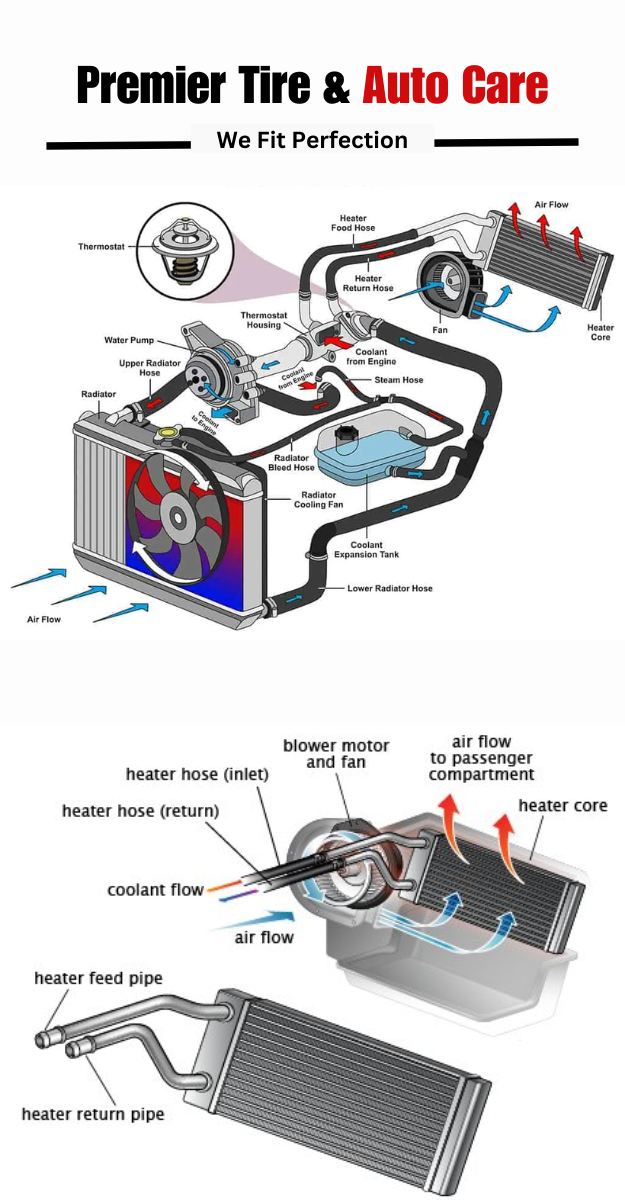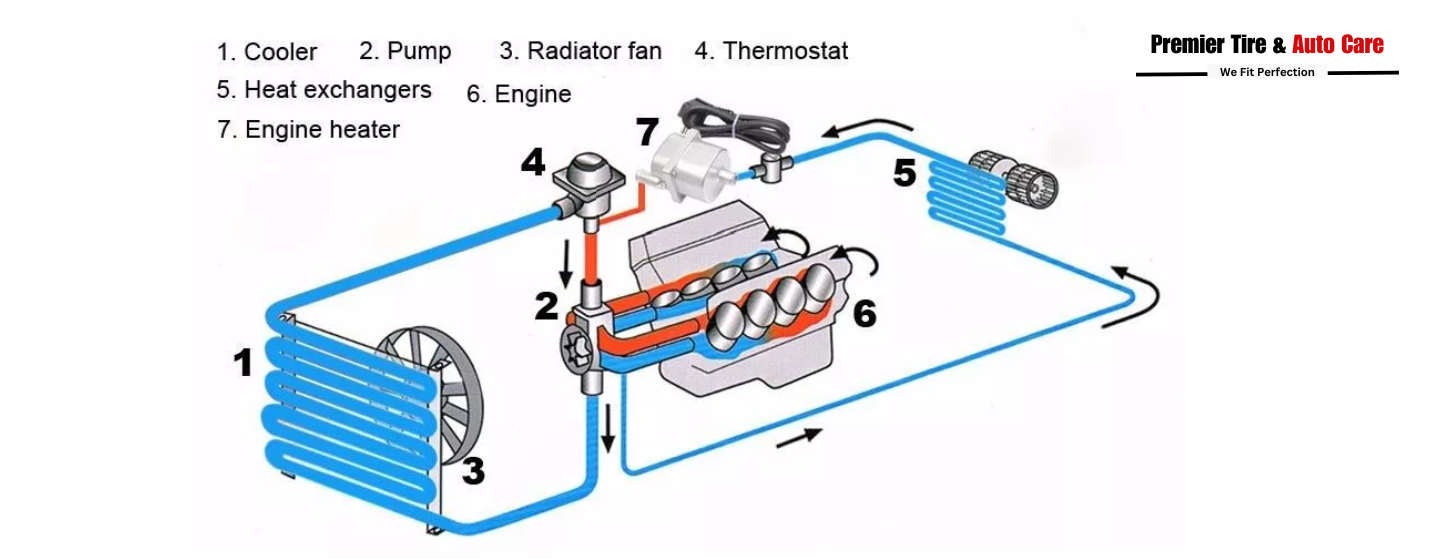
Car Heater Repair
Certainly! Repairing a car heater involves several steps to diagnose and address the issue. First, ensure the coolant reservoir is filled to the recommended level to prevent insufficient heat. Check the thermostat for faults, as a malfunction can affect engine temperature and heater performance. Inspect heater hoses for leaks or blockages, replacing any damaged ones. Consider flushing the heater core to remove debris and sediment that can reduce heat output. Verify the heater control valve’s functionality in allowing hot coolant into the core, replacing if necessary. Test the blower motor for proper operation, as a malfunction can reduce airflow and heat distribution. Check the blend door to ensure it regulates airflow correctly between the heater core and AC evaporator, replacing the actuator if needed. Verify the HVAC controls work correctly, replacing any faulty switches or modules. Additionally, inspect the cabin air filter for clogs that may restrict airflow. If unable to diagnose or fix the issue, seek professional help from a qualified mechanic. Always prioritize safety, especially when dealing with coolant and electrical components.

Repairing a car heater can vary in complexity depending on the issue, but here are some general steps you can take to troubleshoot and potentially fix the problem:
1. Check the Coolant Level: Ensure that your car’s coolant level is sufficient. Low coolant can result in poor heating performance. If it’s low, top it up with a mixture of coolant and water according to your car’s specifications.
2. Inspect the Thermostat: A malfunctioning thermostat can cause heating issues. Consider replacing it if necessary.
3. Check for Leaks: Inspect the hoses and connections around the heater core for any leaks. Leaks can cause a loss of coolant, which affects the heater’s performance.
4. Flush the Heater Core: Over time, the heater core can become clogged with debris and sediment, reducing its efficiency. Flushing the heater core can sometimes resolve this issue. You can use a flushing agent or take it to a professional for a thorough flush.
5. Inspect the Heater Control Valve: Ensure that the heater control valve is opening and closing properly to allow hot coolant into the heater core. Replace it if it’s faulty.
6. Check the Blower Motor: If the blower motor isn’t working, the heater won’t blow warm air into the cabin. Test the motor and replace it if necessary.
7. Inspect the Blend Door: The blend door controls the airflow between the heater core and the air conditioning evaporator. If it’s stuck or malfunctioning, it can prevent warm air from entering the cabin. Check the blend door actuator and replace it if needed.
8. Check the HVAC Controls: Ensure that the controls on your dashboard are functioning correctly. Sometimes, a simple issue like a faulty switch or control module can cause heating problems.
9. Inspect the Cabin Air Filter: A clogged cabin air filter can restrict airflow, reducing the effectiveness of the heater. Replace the filter if it’s dirty.
10. Consult a Professional: If you’re unable to diagnose or fix the issue yourself, it’s best to consult a professional mechanic. They have the tools and expertise to identify and repair more complex problems with your car’s heating system.
To Keep Your Car Heater In Good Condition And Prevent The Need For Repairs
To keep your car heater in good condition and prevent the need for repairs, follow these tips:
Regular maintenance is key. Stay up to date with your car’s maintenance schedule, including coolant checks, flushes, and thermostat inspections. Monitor coolant levels closely and ensure they’re topped up to the recommended level, as low coolant can lead to heating issues.
Promptly address any issues you notice with your car’s heating system, such as strange noises, weak airflow, or lukewarm air, before they escalate into larger problems. Regularly replace the cabin air filter to prevent debris and contaminants from clogging the heating system and reducing airflow.
Periodically flush the heater core to remove debris and sediment buildup that can impede heat transfer. Inspect heater hoses and connections for leaks, cracks, or signs of wear, replacing damaged components to prevent coolant leaks and heating inefficiency.
Use high-quality coolant recommended for your vehicle to maintain proper temperature regulation and prevent corrosion within the heating system. Take measures to protect against corrosion by using corrosion inhibitors in the coolant and keeping the system properly sealed.
Avoid driving your car when it’s overheating to prevent additional strain on the heating system components and potential damage. Lastly, schedule regular inspections by a qualified mechanic to assess the condition of your car’s heating system and address any potential issues before they become serious problems. By following these tips, you can help keep your car heater in good working condition and minimize the need for repairs.

